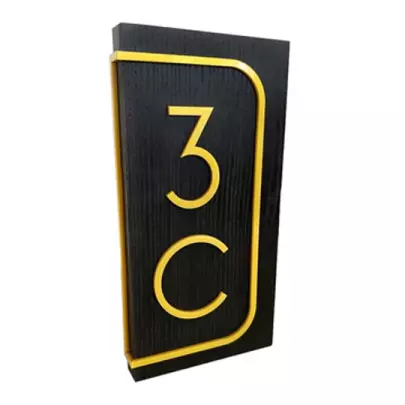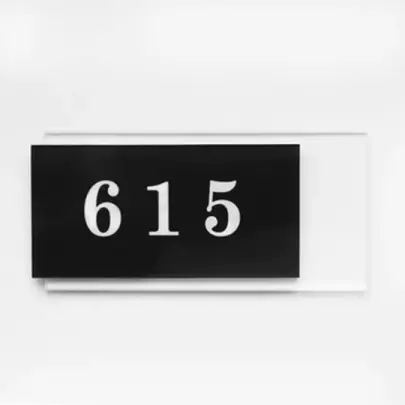Answering FAQ About Door Numbers
From apartment buildings and hotels to offices, educational institutions, and hospitals, we see door numbers almost wherever we go. Thus, those who might need to buy them got interested in how to do it properly. Answering the most frequently asked questions in one article will help you to make the right choice and ensure that you don’t waste either your time or money.

Where Can I Buy Good Door Numbers?
When you start looking for door number plates online, you are offered a pretty big number of different options. However, in most online stores, you will find cheap plastic signs that cannot be considered high-quality from the perspective of both durability and visual design. That’s why we recommend you to be looking for custom-made products made of high-quality and long-living materials.
In terms of interior door numbers — Bsign is a store you need to explore. The manufacturer uses UV-printing technology and top-notch materials to craft personalized numbers that suit different settings — from luxurious hotel door plates to formal school classroom numbers.
What are the Types of Door Numbers?
Once you go to the Bsign website, you’ll find a rich assortment and might get curious about what type of door numbers you need specifically. That depends on your purpose. If you are going to number premises inside the building, look for interior door signs for hotels, offices, hospitals, apartments, etc. However, when you need to number your private dwelling, go to the category of house number signs. What makes house number signs different from interior ones?
- Size: The house number sign should be visible from the road, that’s why the standard size of the rectangular sign is 19.6”x11” / 500*280 mm.
- Design: Usually, house number signs don’t include excessive elements. Their major task is to indicate the house address.
- Durability: Since house number signs are placed outside, it’s better to make them from long-living stainless steel.
Are there Any Conventions for Door Numbering?

Door numbers are placed not for the interior beauty but for convenient navigation. Placing them in a confusing manner is a major mistake that violates their major function. Sequential numbering is the most convenient wayfinding solution. The entry room is numbered “1”, and all the following rooms are numbered sequentially. If the building doesn’t include a single corridor but a more sophisticated interior, it’s relevant to mention the number of the building’s wing as well.
What are the Standards for the Door Number Sign Design?
Here are three points you need to know about these standards:
- There are no standard shapes and sizes for door numbers. The only goal the number size must meet is to make door numbers visible from a distance.
- Door numbers that locate permanent premises should comply with the ADA requirements, meaning numerals should be raised from the background plate and should be made in a contrasting color.
- Door numbers can also be used to locate rooms that already have their nameplates, like “Conference room”, “Warehouse”, “Kitchen”, “HR department”, etc. However, this is optional if a nameplate complies with ADA.
More to Read:
Previous Posts:










